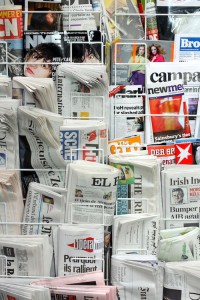 This week, one of the world’s most respected newspapers, The New York Times refreshed and re-launched their digital platform to mostly positive reviews. Fast Company characterized the visual refresh as somewhat exciting compared to the previous decade-old design. Others pointed to the back-end changes, re-styled pages and “sections” and navigation adjustments as necessary moves to moor the company in the rough waters of decreasing sales, increased competition and slackening advertising rates for digital newspapers.
This week, one of the world’s most respected newspapers, The New York Times refreshed and re-launched their digital platform to mostly positive reviews. Fast Company characterized the visual refresh as somewhat exciting compared to the previous decade-old design. Others pointed to the back-end changes, re-styled pages and “sections” and navigation adjustments as necessary moves to moor the company in the rough waters of decreasing sales, increased competition and slackening advertising rates for digital newspapers.
We generally like the design and navigational changes. The look and feel of the refreshed home page is less like the “swarm” of ink of the old design and presents a clean, measured and even engaging experience. With the new navigation features, scrolling through an article no longer requires clicking and reloading into new pages, which made for a choppy reading experience. But beyond the aesthetic, and even the functionality improvements of the refresh, what we find most interesting about the new site is what the changes say about the status of The Times in our culture and the newspaper world.
“We are seeing a company retool and experiment in the laboratory of design, media and branding, and in the end, this is about larger strategic issues,” Kate Canada Obregon, Oishii’s Head of Research and Strategy explained. “The New York Times is actively pursuing its once coveted leadership role in our changing world, and is using the discipline of design to get there.”
Oishii’s President and Chief Creative Officer Ish Obregon agreed, pointing out how even small details like the new smooth integration of the comments alongside the articles, which he says creates a “rich and textured” feel to the reading experience, is all part of a bigger news delivery goal. “From a design perspective, this is a very small step toward a blog look, without losing the power and stature of the new,” Ish said. “And great design strengthens the delivery of news.”
The Times has arguably been one of the most important leaders in the distribution of news. As it wields such formidable power, it also creates and shapes expectations about reading, how we get our news and how we recognize what’s important.
The New York Times redesign is a way for it to once again be a leader in reimagining news, reading and information delivery. Its role has always been to report facts, tell stories and inform us about our world, but in this new digital era, it’s also subtly taken on another role – to deliver “all the news that’s fit to print” through a fresh, innovative and powerful design harnessed through the most creative use of technologies.
